
From left, Lindbergh's "Spirit of St. Louis," Melvill's SpaceShipOne and Yeager's Bell X-1. |
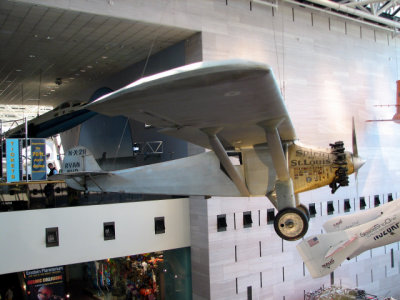
Ryan NYP "Spirit of St. Louis," FIRST nonstop solo transatlantic flight, May 21, 1927, Pilot: Charles A. Lindbergh. |

On May 21, 1927, Charles Lindbergh completed the first solo nonstop transatlantic flight in history ... |
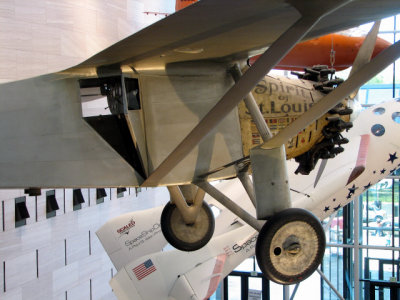
... flying his "Spirit of St. Louis" 5,810 kilometers (3,610 miles) between Roosevelt Field on Long Island, New York... |
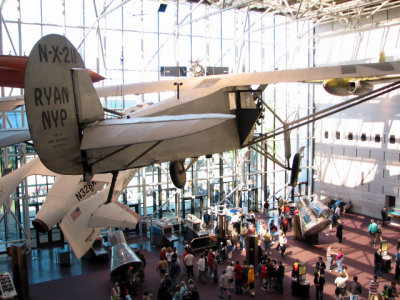
... and Paris, France, in 33 hours, 30 minutes. ... "Spirit of St. Louis" was named in honor of Lindbergh's supporters ... |
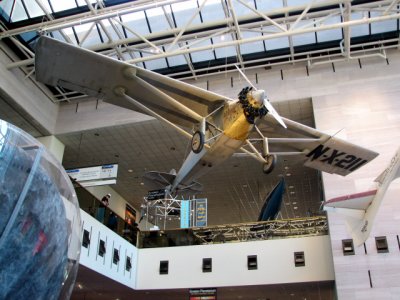
... in St. Louis, Missouri, who paid for the aircraft. The initials "NYP" mean "New York-Paris," the object of the flight. |
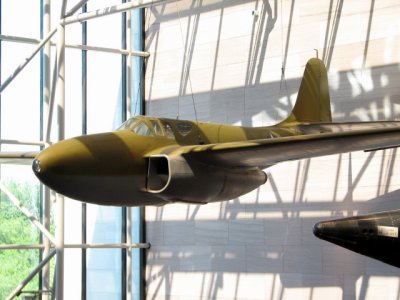
Bell XP-59A, America's FIRST turbojet aircraft, Oct. 1 & 2, 1942, Pilots: Robert Stanley/Laurence Craigie. |
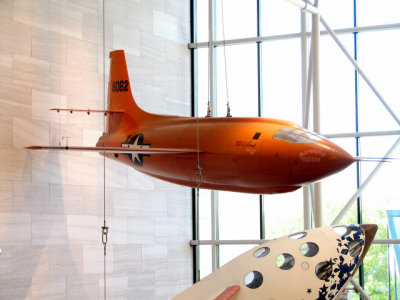
Bell X-1, FIRST aircraft to fly faster than the speed of sound, Oct. 14, 1947, Pilot: USAF Capt. Charles E. "Chuck" Yeager. |
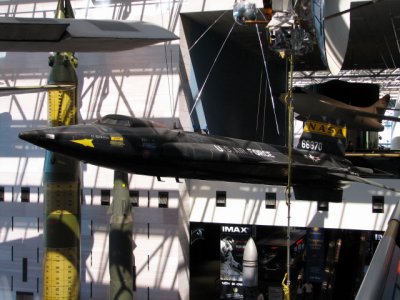
North American X-15, FIRST winged aircraft to fly at Mach 4, 5, & 6 above 30,500 meters (100,000 feet), 1959, operated by NASA. |
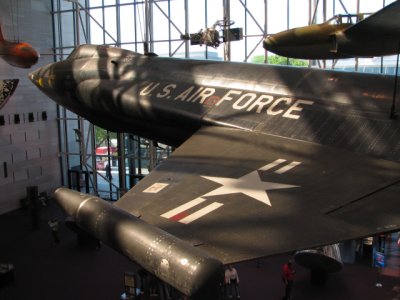
In one test, the X-15 reached an altitude of over 108 km. (67 miles), flying so high that it operated more as a spacecraft ... |
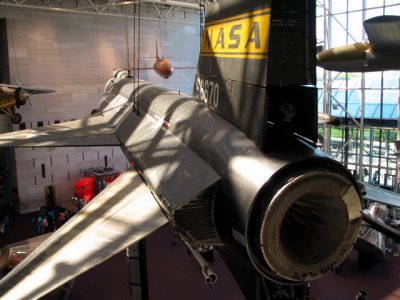
.... than an airplane. In 1967, it reached Mach 6.72 (7,297 kilometers or 4,534 miles per hour). |
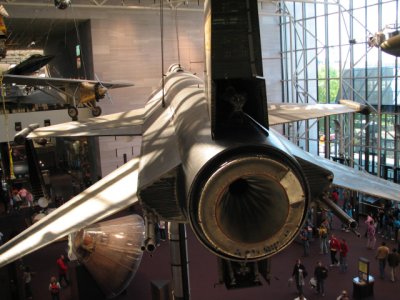
The X-15 was designed to explore the problems of flight at very high speeds and altitudes. |
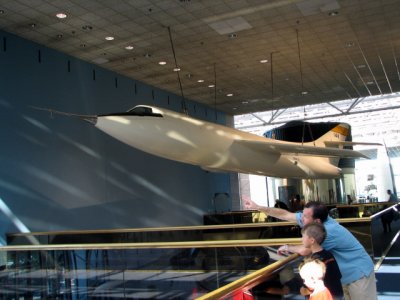
Douglas D-558-2 Skyrocket, FIRST aircraft to fly faster than twice the speed of sound, Nov. 20, 1953, Pilot: A. Scott Crossfield |
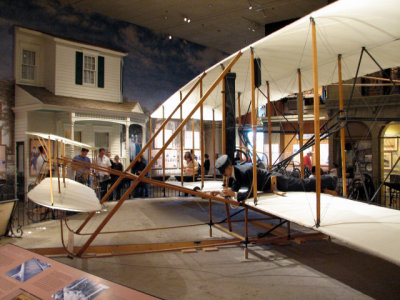
1903 Wright Flyer, FIRST successful airplane, Dec. 17, 1903, Pilot: Orville Wright. |

"On Dec. 17, 1903, at Kitty Hawk, North Carolina, the 1903 Wright Flyer became the first powered, heavier-than-air machine ... |

"... to achieve controlled, sustained flight with a pilot aboard. |
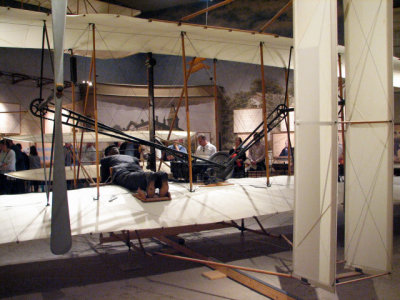
"It flew forward without losing speed and landed at a point as high as that from which it started." |
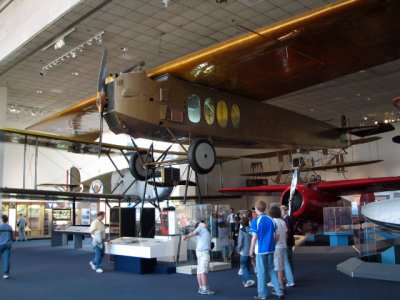
Fokker T-2, FIRST aircraft to fly nonstop coast to coast, May 1923. The flight took 26 hours and 50 minutes. |
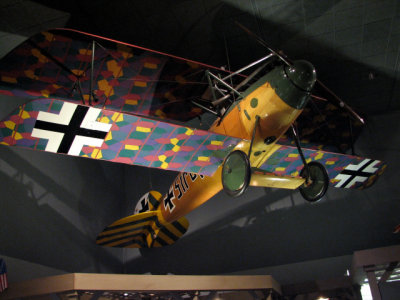
Albatros D.Va, German, World War I, 1918. |

SPAD XIII Smith IV, French, World War I, assigned to the 2nd Aero Pursuit Squadron of the U.S. Army Air Service, 1918. |
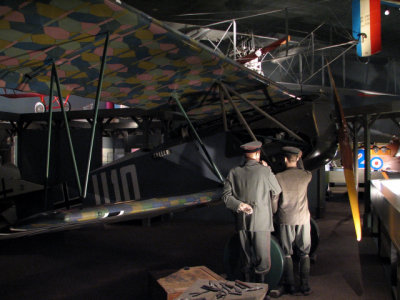
Fokker D.VII, German, World War I, 1918; captured on Nov. 9, 1918, when its pilot mistakenly landed on a U.S. airfield. |

Supermarine Spitfire Mk. VII, British, World War II. |
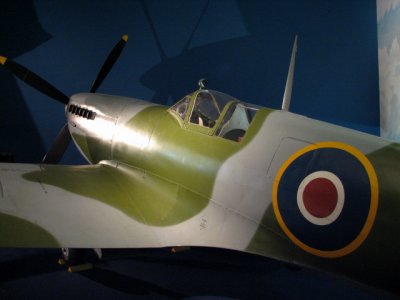
The legendary Spitfire, along with the Hurricane, successfully defended the U.K. in the Battle of Britain. |

Macchi C.202 Folgore, Italian, top; and North American P-51D Mustang, American. World War II. |
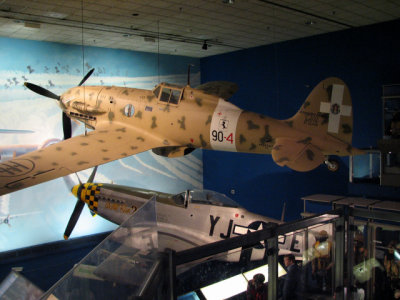
Macchi C.202 Folgore, top. Designed in 1940, the Folgore (Lightning) was the most effective Italian fighter ... |
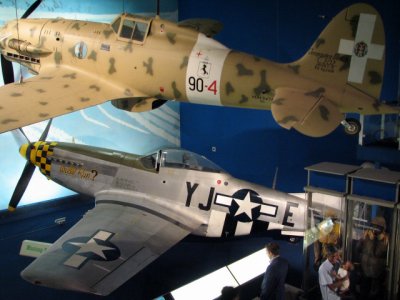
... used in quantity during World War II. Bottom: North American P-51D Mustang. |
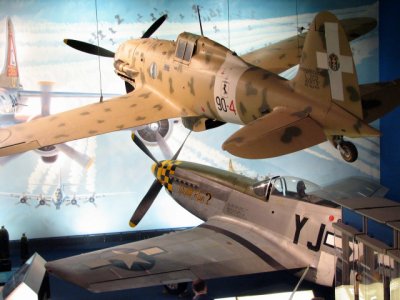
Many experts consider the P-51 Mustang, bottom, the best fighter of World War II. |
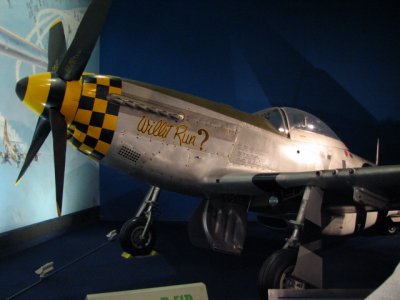
Originally developed for the British, the Mustang was later ordered in large quantities by the U.S. Army Air Forces. |
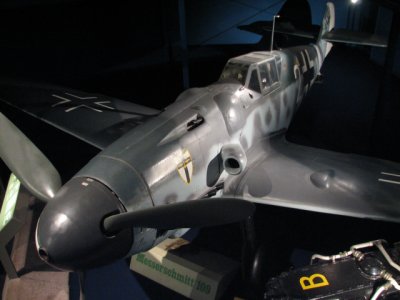
The Messerschmitt Bf. 109 gained the world's attention during the Battle of Britain. It remains Germany's best-known aircraft. |
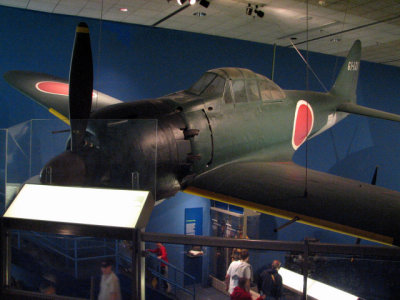
Mitsubishi A6M5 Zero. The Zero was the primary Japanese naval fighter during World War II. |
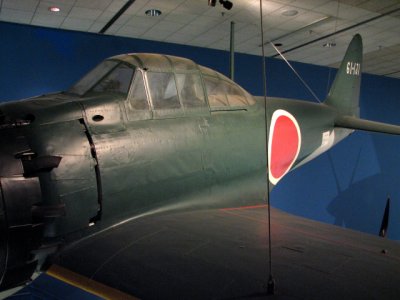
It was used in the attack on Pearl Harbor and in Kamikaze raids toward the end of the war. |

Allied pilots were astounded by the Zero's maneuverability. It was very successful in combat until the Allies changed tactics. |
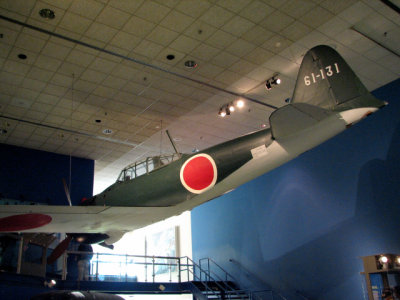
Allied pilots referred to all Japanese fighters as Zeros, but the term is correctly applied only to the A6M -- codename "Zeke." |
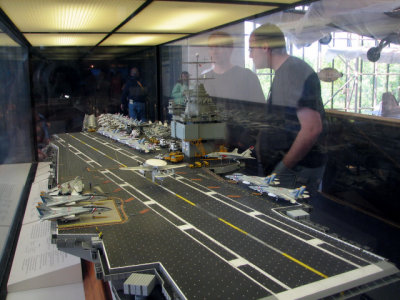
Scale model of the aircraft carrier Enterprise, U.S. Navy. |
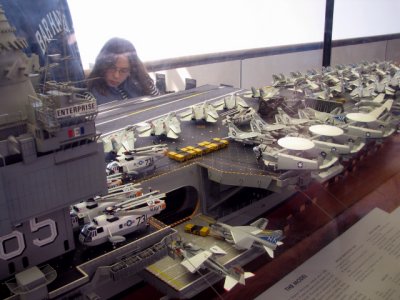
Scale model of the aircraft carrier Enterprise, U.S. Navy. |

Scale model of the aircraft carrier Enterprise, U.S. Navy. |
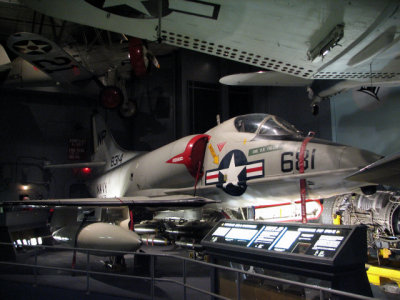
Douglas A-4C Skyhawk, designed 1950-52, first flown on June 22, 1954. A4s were used against ground targets in the Vietnam War. |

A precursor of the U.S. space shuttle. |
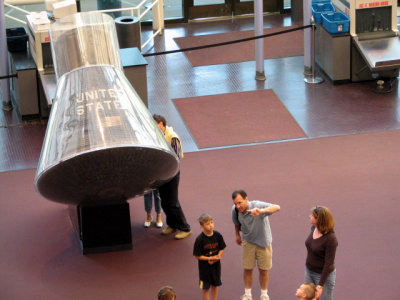
Mercury "Friendship 7" carried FIRST American to orbit Earth on Feb. 20, 1962. Astronaut: John H. Glenn Jr. |
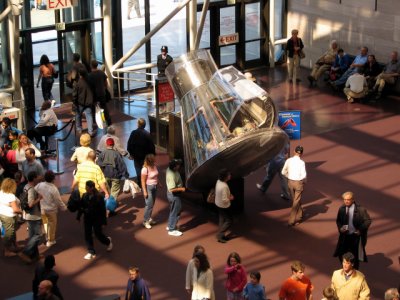
Gemini IV made possible the FIRST American spacewalk, June 3, 1965. Astronaut: Edward H. White II. |
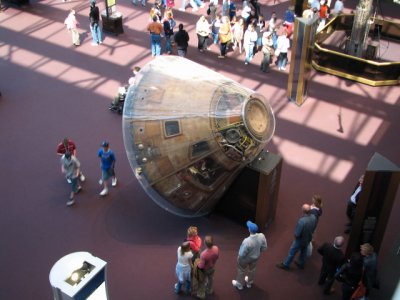
Apollo 11 Command Module "Columbia," FIRST manned moon landing, July 16-24, 1969. Neil Armstrong, Buzz Aldrin, Michael Collins |
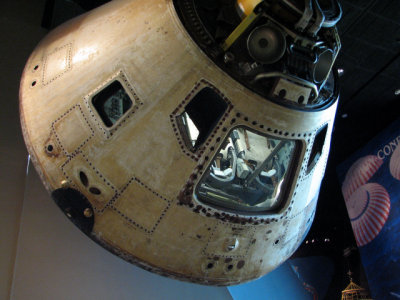
Apollo Command Module. |
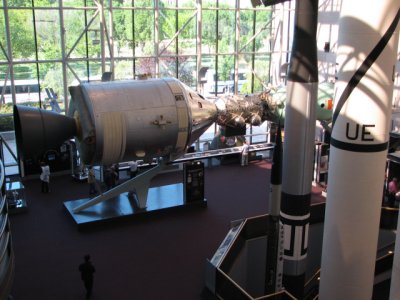
Background: U.S. Apollo mission docking with Soviet Soyuz spacecraft. |

Breitling Orbiter 3 Gondola, FIRST nonstop flight around the world by a balloon, March 21, 1999. |

Bertrand Piccard and Brian Jones completed the journey in this British-built gondola in 19 days, 21 hours, and 55 minutes. |











